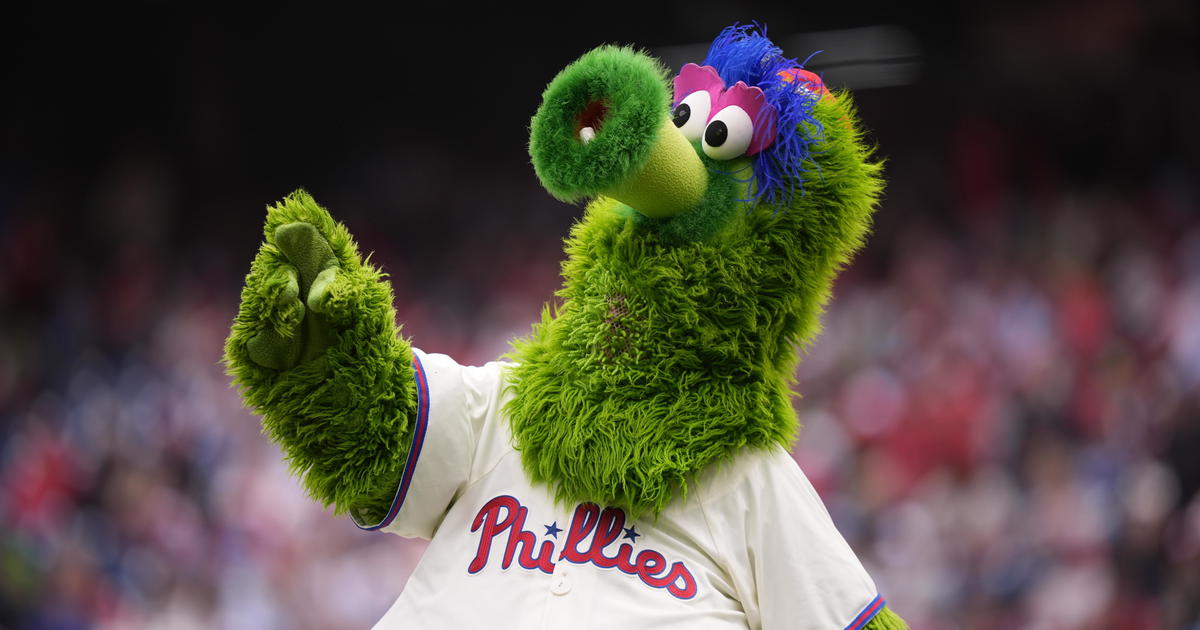Gotta Dance: Pittsburgh Native Gene Kelly Honored On Centennial
By Veronica Dudo
PHILADELPHIA (CBS) - Pittsburgh native Gene Kelly revolutionized the world of dance in the 20th century with his cutting edge choreography. The legendary icon was a pioneer who created some of the most beloved dance numbers in American cinema. His athletic yet graceful style changed the perception of how film stars could look and dance in the 1940's and 1950's. This year marks the innovative choreographer, dancer, actor and director's centennial. In celebration of the 100th anniversary of Gene Kelly's birth, his wife Patricia Kelly remembers her late husband's prolific accomplishments and Pittsburgh roots.
The pair met in 1985 while working on a television special at the Smithsonian Air and Space Museum. She was a writer and Gene Kelly was the narrator. Patricia Kelly says a few months later, he arranged for her to travel to California to write his memoirs. The couple married in 1990 when she was 31 and he was 77. Patricia Kelly recalls her husband's desire to show her his Steel City roots.
"We had planned to return to Pittsburgh just to visit. He had wanted to show me some of his old haunts and things but he got ill before we were able to go there. I made the first trip myself and attended the first Gene Kelly Awards 13 years ago and I've been going back every year since," she says.
While that first trip proved to be very emotional, Patricia Kelly says having the opportunity to talk about her late husband to interested students was inspirational.
PHOTOS: Gene Kelly
"They are superb and I think in an interesting way they were for me, very important in the grief process. Gene was gone but they are so alive and so full of energy and interest and passion and it was really fun," she says.
Patricia Kelly's late husband often shared with her memories of his hometown.
"Pittsburgh was one of the great cities for all of the traveling acts because the train stops there so they would get all these wonderful vaudeville performers who would play all of the great theatres there and they were beautiful theatres," she recalls, "he and his little brother Fred would go to the shows and they would take turns memorizing the eight bars and then run into the lobby and jot it down and then they'd switch."
After the shows, Patricia Kelly says the brothers would paste together the arrangements and then redo the numbers for amateur shows around Pittsburgh and across the Ohio line.
In 1931, Gene Kelly enrolled at the University of Pittsburgh to study economics. After earning a Bachelor of Arts in Economics he then moved on to the University of Pittsburgh Law School. He also served as a dance teacher at his family's dance studio which eventually was renamed The Gene Kelly Studio of the Dance. He decided to drop out of law school to pursue a career in the arts. He moved to New York City in 1937 where he worked as a performer and choreographer on Broadway before moving to Hollywood.
Despite his amazing dancing talents, at one point Gene Kelly actually wanted to have a career as a professional athlete as he was an avid sports fan.
"He had wanted to be shortstop for the Pirates and a hockey player and all these other things but he finally settled on being a dancer and choreographer," she says, "choreographer was actually above a dancer for him, he was searching for an American style of dance."
Patricia Kelly believes many events from Gene Kelly's youth in Pittsburgh impacted his outlook on life; especially how he decided to dress in films. Opting not to wear tuxedos which had been a popular costume of the era for male dancers, Gene Kelly wanted to embody the look and feel of the American man. He often wore shirts with his sleeves rolled up, slacks, vests, sweaters, hats and loafers.
His larger than life screen presence and charming personality captivated audiences. Gene Kelly had the ability to perfectly compliment his on-screen co-stars whether they were professional or non-professional dancers. Some of his famous leading ladies included Judy Garland, Rita Hayworth, Kathryn Grayson, Lana Turner, Cyd Charisse, Debbie Reynolds and Leslie Caron.
In addition to dancing with beautiful dancers, Gene Kelly also devised intricate and entertaining routines with inanimate objects. He choreographed and performed several unprecedented musical numbers in the 1940's and 1950's. He danced around in puddles and sang with an umbrella in the rain in one of the most memorable musicals of all time, Singin' in the Rain. In Anchors Away, he danced with the animated cartoon character Jerry Mouse. In Thousands Cheer he danced with a mop for his "Let Me Call You Sweetheart" number. In Summer Stock he danced on a squeaky floorboard while stylishly tearing up a newspaper with his famous feet. One of his major accomplishments came when he danced with his own reflection for the number "Alter Ego" from the film, Cover Girl. Audiences were amazed at the achievement especially with the limited technology at the time.
Patricia Kelly is currently working on a memoir about her late husband and hopes his contributions will continue to be remembered. She will also host "Pitt's Gene Kelly Centennial Celebration," an evening of stories about the artist, his accomplishments and Pittsburgh roots on October 25th at the University of Pittsburgh.
Gene Kelly set out to develop an American style of dance but along the way he revolutionized the industry and created a lasting legacy. The iconic dancer-choreographer forever changed the world of dance and his influence is still revered today. Gene Kelly's star power illuminated the silver screen during his performances and shined bright behind the scenes when he choreographed his legendary masterpieces.
Veronica Dudo is an award-winning journalist covering everything from breaking news to red carpet celebrity interviews. Follow her on Twitter @VeronicaDudo and Facebook.



